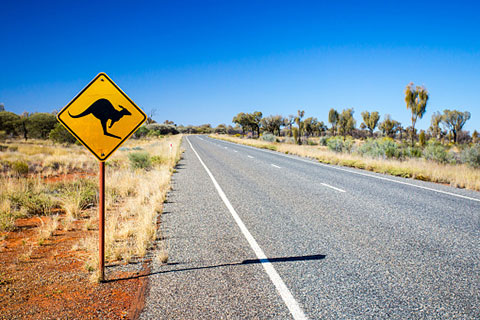When it comes to braking for animals, self-driving cars are getting bamb-roo-zled in Australia.
Kangaroos are completely confounding autonomous vehicles being tested Down Under—and it’s all in the way they hop.
A car’s computer can’t tell how far away the iconic creatures are when they’re mid-jump, making the autonomous vehicle artificially think twice about what to do.
Sensors on self-driving cars use the ground as a reference point, but the skewed perspective of looking down the road makes a kangaroo appear further away while up in the air, and closer once it’s on the ground, Volvo Australia technical manager David Pickett told ABC News Australia.
Complicating the issue is the way autonomous autos perceive the world—and wildlife—around them.
The vehicles are “taught” to recognize different animals by their gait—essentially an outgrowth of pedestrian-sensing technology, Pickett said. But the strange and various postures of a ‘roo are making it hard for the cars to even detect what they’re looking at, let alone decide how to react.
And while the kanga conundrum is specific to Australia, it could wreak a small havoc in the country where 80% of animal-involved car crashes in 2015 involved a kangaroo.
Of course, the issue of wild animals on the road is not isolated to the island nation.
Americans hit 1.25 million deer, elk, and moose—and racked up $4 billion in related damages—in 2014 alone, according to numbers from State Farm. That same year, 166 people died from animal collisions in the U.S., Insurance Institute for Highway Safety statistics show.
To artfully dodge such critters, cars are being programmed to take a lot into account, such as any other objects in the vicinity and how costly a crash would be. Hitting a pedestrian, for example, would be deemed a much costlier collision than smashing into a semi-truck or something as small as a squirrel.
Other factors the computers could consider in nanoseconds include the time of day and year, the type of environment surrounding the road, how wide the road is, and whether there’s any other traffic around.
And whether they’re Down Under, in the U.S.A., or anywhere else, the lives of the world’s wildlife are now just one more thing ultimately put in the hands of driver-free cars.
